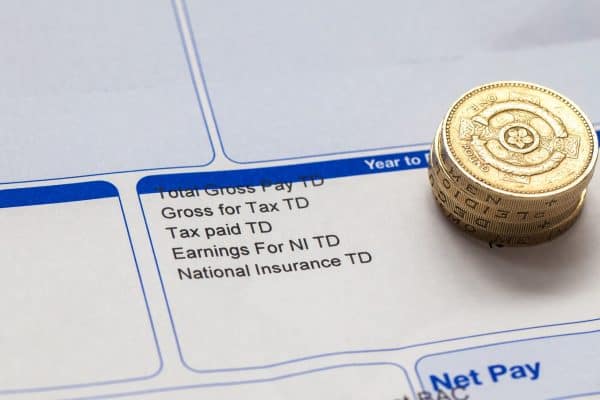Salary Calculator For Minimum & Living Wages
If you want to work out your salary or take-home wage and you only know your hourly rate or how many hours you work, or know your salary but need to work backwards, use our Salary Calculator to get the information you need. Knowing your yearly or monthly salary can help you budget or balance your savings and bills each month by knowing what you can and can’t afford. But it can also help you understand if you are getting paid correctly by the National Minimum Wage or in the correct tax bracket.
How To Use The Minimum Wage Salary Calculator
Using our yearly, monthly, and hourly wage calculator is easy; just enter the information that you know in the form, from your hourly, weekly, monthly or yearly rates alongside contracted hours, your age, and your tax code or pension information if you know this. The latter can help you find out how much tax, insurance and pension will come out of your take-home wages.
This helps to see what your take-home wage works out to be currently and is a useful tool to know if you are getting paid correctly or if you are comparing jobs on the market.
What Is The Difference Between National Living Wage And Minimum Wage?
The National Minimum Wage is the minimum amount you are entitled to depending on your age, but the National Living Wage is for those aged 21 and over come April 2024 (was those aged 23 and over April 2023 tax year).
This amount is higher than the National Minimum Wage and is the legal minimum for over 21s, this is to ensure that you are always paid a wage that covers the cost of living. As of April 1, 2024, the National Living Wage is £11.44 per hour for over 21s, compared to the April 1st, 2023, tax year wage rate of £10.42 per hour for over 23s.
You should be getting regular pay rises to reflect the Living Wage as well as to match the cost of living.
What Is The National Minimum Wage?
The National Minimum Wage is the minimum per hour rate that all workers are entitled to and is a legal right. The hourly rate for minimum wage does depend on your age and whether you’re an apprentice but there are still base rates that your employer has to pay you.
The National Minimum Wage is set by the UK Government and can change and fluctuate depending on the tax year, inflation, and other factors. While we endeavour to keep this tool updated with the most recent information, take a look at the Government’s National Minimum Wage rates for the most up-to-date information.
As of 1 April 2024, the National Minimum Wage rates are as follows:
- Apprentice: £6.40 per hour
- Under 18: £6.40 per hour
- 18 to 20: £8.60 per hour
- 21 and over: £11.44
Apprentices are entitled to the apprentice rate if they are aged under 19 or 19 and over and in the first year of their apprenticeship. However, after completing the first year of their apprentice, they are entitled to the minimum wage for their age.
Who Gets The Minimum Wage
To get minimum wage you have at least be the school-leaving age of 16 and be classed as a worker. If you are over 21 (from 1 April 2024), you are entitled to the National Living Wage.
Workers entitled to receive minimum wage are:
- Part-time and full-time workers
- Casual labourers
- Agency workers
- Workers paid by the number of items they make
- Apprentices
- Trainees
- Workers on probation
- Disabled workers
- Agricultural workers
- Foreign workers
- Seafarers
- Offshore workers
Those not entitled for the minimum hourly rate include:
- Workers aged under the school leaving age of 16
- Work experience, placement, shadowing, internships
- Government pre-apprentice schemes or Jobcentre Plus Work trial for up to 6 weeks
- Voluntary work
- Self-employed or contractors – read more about your employment status
For more information, check out the Government’s guide to Minimum Wage.
What If I’m Getting Paid Less Than The Minimum Wage Or Living Wage?
The National Minimum and Living Wages are legal rights, so contracts for payments below this are not legally binding as you are entitled to this, and your employer is entitled to pay it to you. Know that if you are getting underpaid or not paid at all your employer will be breaking the law, it is your right to report and get what you are entitled to.
If you know that you aren’t getting paid minimum or living wage depending on your age, or you’ve used our Minimum Wage and Salary Calculator and you’ve found out you’re getting less than what you’re entitled to, this is what you should do:
1. Find Out How Much You Earn Vs What You’re Owed
If you are paid the wrong amount or under minimum wage, a good starting point is to look at your payslip to see what’s included and deducted each time your paid, including any tax and insurance. Then look at your employment contract. This will show how much you’re being paid, either your annual salary, monthly or hourly rate, as well as when you will be paid.
Related: How To Read Your Monthly Payslip
Check how many hours you work, if it’s overtime or night work, as well as using a Salary Calculator, check the National Minimum and Living Wages to see if your rate matches the baseline. From there, you can work out how much you should be owed per hour.
2. Speak To Your Employer
If you’re not getting paid minimum wage, your employer owes you the difference between what you should have been getting paid and what they have been paying you. Seek out for them to explain how they’ve worked out your pay and tell them why you think you are getting paid under. Share any evidence of this, such as your payslip, contract, timesheet or the governments national living wages.
If they agree and have made a genuine mistake, they might suggest giving you benefits, but you should ask for the wage and get them to pay what you are owed back. ask them to respond within a certain time frame such as the next week or before your next payday.
To confirm it in writing so that you have a record, confirm what you’ve discussed in a letter, email or message.
3. Seek Advice Or Call The Acas Helpline
If you’re not getting anywhere from the above and need more help, you can get help and advice from your local Citizens Advice, your trade union representative if you’re a member, or by contacting the Acas helpline on 0200 123 1100 for help. They can confirm whether you’re entitled to minimum wage and work out your options.
4. Raise A Formal Complaint
If your employer has a formal grievance procedure you can use this, but if they don’t you can still raise a grievance which is making a formal complaint to the employer which can get the issue resolved without needing legal action.
For help, Acas have a helpful guide to raising a grievance. Or you can complain to HM Revenue and Customs (HMRC) which can be anonymous, and they can take action against the employer. To make a complaint to HMRC, you can use the pay and works rights complaint form on GOV.UK
5. Making A Claim To An Employment Tribunal
If your complaint and issue still isn’t resolved by this point, you can take your employer to a tribunal and get legal involved. If you want to do this, you first need to tell Acas you wish to make a tribunal claim as they can see if your employer will agree to a ‘early conciliation’ which is a way to resolve it without going to a tribunal.
To do this, you can either fill in the early conciliation form, or call the team on 0300 123 1122.
6. Taking Your Employer To A Tribunal
A tribunal should be your last resort as going the legal route to solve this issue could be stressful and may add up costs for legal advice or representation. Once you notify Acas, have gone through the early conciliation process, and got an early conciliation certificate, you can claim unpaid wages 3 months minus 1 day from the date you should have been paid. You can also claim up to 2 years back if there’s less than 3 months between each underpayment or non-payment, and the underpayments are linked such as being caused by the same error.
Once your tribunal hearing is in play, a judge will ask you and your employer questions to understand what you’re claiming and what your employer’s defence is. You must give evidence and after the hearing the panel and judge will assess and tell you what happens next and, if you win your case, any benefits and compensation. For more information, Citizens Advice have a guide on Attending Your Employment Tribunal Hearing.
7. Taking Your Employer To Court
If you don’t have the option to go to a tribunal hearing, you might be able to take your employer to court. You should only consider this as a last resort, if this applies to you, contact the Citizens Advice for help.
No matter what stage you are at in terms of getting paid the correct amount, know that you are legally protected from unfair dismissal or unfair treatment even if you report them for underpayment or non-payments.
What About Tax Codes?
Your tax code is made up of numbers and letters and can be found on your payslip, on letters or emails from HMRC. This is used by your employer or pension provider to work out how much Income Tax to take from your pay or pension. You’ll be paying Income Tax, National Insurance, and possibly pension if you’ve signed in for this.
There are various PAYE Tax Forms, which is a system that many employers use to pay tax and National Insurance. Your Payslip shows your monthly wages, whereas your P60 tax form is the certificate from the HMRC to show your end of tax year information. Other forms include the P11D tax form to cover the cost of benefits, a P45 when you leave your job which shows how much tax you’ve paid in that employment, and finally the P800 if you think you’ve paid an incorrect amount of tax. For more, read our guide to How To Tell The Difference Between PAYE Tax Forms.
To learn about what your tax code means, check the GOV.UK website. If you believe you’re in the wrong tax code and have been paying too much tax, you are entitled to get your money back. In most cases, HMRC will update your tax code when your income changes, but if that information is wrong you may be in the wrong tax code. All you need to do is update your tax code and if HRMC change it your next payslip and P800 will show your new tax code alongside adjustments to your pay if you were paying the wrong amount and either a refund of extra tax paid or tax you may owe if you paid too little.
Using Our Take Home Salary Calculator
Understanding what your annual salary is by using our calculator can help you not only figure out what your hourly rate is, but also calculate your take-home salary per month or per year.
To help make sure you are getting paid correctly, this will also to help you to budget every month. To help you with all things budget living, life hacks, and being money savvy, take a look at our Good Vibes blog for some helpful advice. And if you’re struggling with finances or debt you can seek advice from Citizens Advice or check the benefits you can get on GOV.UK.




















